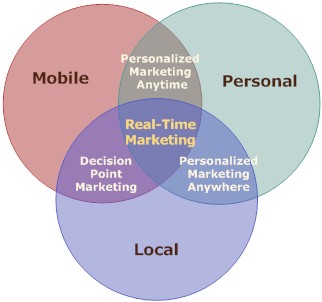There are several new marketing trends for 2010 that will have an impact on practically every marketing organization because of new trends in customer behavior, such as:
- Shift in consumer mentality from recession to recovery
- Changes in how customers make purchase decisions
- New technologies for communicating with customers
Let's take a look at the major marketing trends for 2010 that will affect both business-to-business (B2B) and consumer (B2C) companies so we can update our marketing strategies for 2010.
Spotting marketing trends
When something becomes a "hot trend" it does so for two reasons. First, it's a product or activity that has been proven and refined. And, second, it's growing in adoption. The hot marketing trends for 2010 are all visible as we enter the year, and these trends are growing to the point where we need to adjust our marketing communications and sales strategies to take advantage of them.
Big marketing trends for 2010
Some of the hot marketing trends are rather obvious, such as the growing use of social media. But it's important to identify the "big marketing trends" for 2010 that can help define effective marketing strategies for 2010.
Big Marketing Trend #1: Personal — Communicate with individuals to carry on conversations about meeting their needs and solving their problems.
Big Marketing Trend #2: Local — Participate in personal, face-to-face meetings, events, and activities near where your product will be used because fewer customers will be flying to national events and conferences.
Big Marketing Trend #3: Mobile — Reach customers anywhere at any time with the 24/7 connectivity of mobile devices.
These three big marketing trends for 2010 overlap and reinforce each other to provide marketing opportunities to connect with your customers and increase revenue.
Marketing trend opportunities for 2010
Here are four ways you can combine these big marketing trends to create actionable marketing strategies that your competitors may not have thought of yet:
Marketing Trend Opportunity #1: Personal + Mobile — Provide personalized product, service, and solution information when and where customers are thinking about their problems and needs
Marketing Trend Opportunity #2: Personal + Local — Tailor marketing messages based on each person's purchase process, starting with their information gathering and continuing through their searching, purchasing, and reordering.
Marketing Trend Opportunity #3: Mobile + Local — Deliver product and solution information to customers at the location where the purchase decisions are being made using mobile devices and local Internet searches.
Marketing Trend Opportunity #4: Personal + Local + Mobile — Use one-to-one marketing to treat different customers differently — anywhere, anytime, and using any medium they want, whether it's text, telephone, Web, mobile app, or video.




